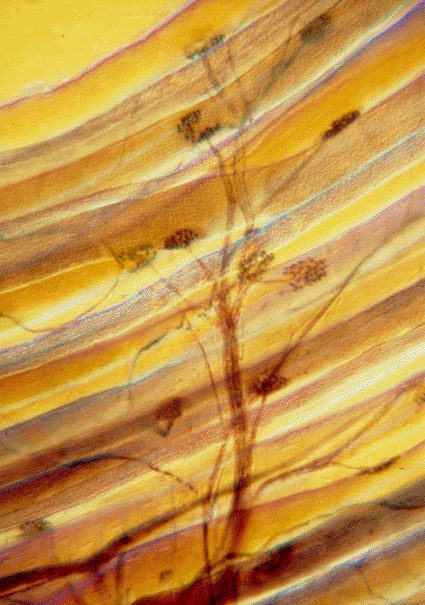Desperate Muscle Cells Produce Nerve Regenerating MicroRNA
By LabMedica International staff writers
Posted on 21 Dec 2009
Neuroscientists are investigating the possible therapeutic applications of a class of microRNA (miRNA) produced by damaged muscle cells in patients with amyotrophic lateral sclerosis (ALS, or Lou Gehrig's disease).Posted on 21 Dec 2009
ALS is a neurodegenerative disease with no known cause characterized by loss of motor neurons, denervation of target muscles, muscle atrophy, and paralysis. As the disease progresses and muscle tissues begin to degenerate due to lack of nerve stimulation, muscle cells produce various molecules aimed at stimulating regeneration of nerves.

Image: Light micrograph of synapses between a motor neuron and skeletal muscle cells (Photo courtesy of Eric Grave / SPL).
Investigators at the University of Texas Southwestern Medical Center (Dallas, USA) studied one of these molecules, the microRNA miR-206. They reported in the December 11, 2009 issue of the journal Science that the skeletal muscle specific miRNA-206 was a key regulator of nerve regeneration signaling, and that it was dramatically induced in a mouse model of ALS. Mice that were genetically deficient in miR-206 formed normal neuromuscular synapses during development, but deficiency of miR-206 in the ALS mouse model accelerated disease progression. MiR-206 was required for efficient regeneration of neuromuscular synapses after acute nerve injury, which, thought the investigators, probably accounted for its salutary effects in ALS.
"MiR-206 seems to sense nerve injury and promote regeneration," said senior author Dr. Eric Olson, professor of molecular biology at the University of Texas Southwestern Medical Center. "While miR-206 initially prompts nearby surviving nerves to send new branches to the muscles, it only delays the inevitable. Our findings correlate with the observation in ALS patients that the disease is nearly asymptomatic until a large fraction of motor neurons has died, at which point the few remaining ones cannot compensate sufficiently. These results provide a new perspective on the mechanisms of ALS. Because miR-206 only exists in skeletal muscle, a drug based on it might not affect other tissues. That limits its risk of side effects and is a key part of its appeal as a potential therapy."
Related Links:
University of Texas Southwestern Medical Center













